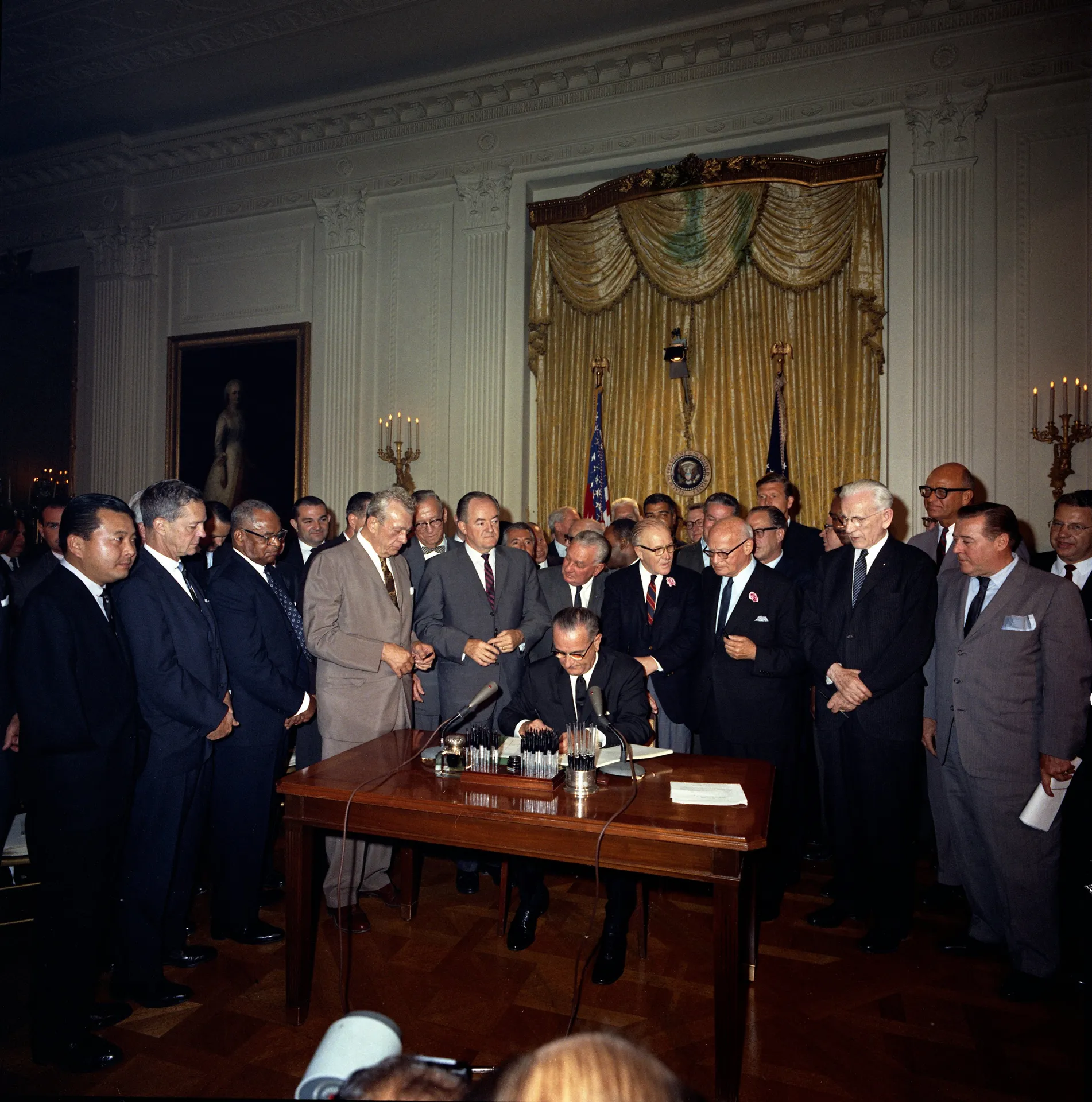Photo Credit: LBJ Library photo by Cecil Stoughton
By Dr. Russ Wigginton Guest Columnist
As we commemorate the anniversary of the Civil Rights Act of 1964, remember much more was left to be addressed following its passing
As published in The Tennessean, July 24, 2024, 6:00 am CT
Since the Civil Rights Act of 1964 was signed 60 years ago on July 2, America has experienced great strides toward attaining civil rights for all her citizens.
The law established protection against discrimination in voting, commerce, employment, and programs with federal assistance. It outlawed segregation in public parks, libraries, schools, and colleges. It instituted government agencies and expanded federal programs to allow for intervention in discrimination cases. It is lauded as the most expansive civil rights law since Reconstruction and has set the basis for future civil rights legislation.
The Act was met with intense pushback when it was introduced in 1963 by President John Kennedy, who did not live to see it pass. After Kennedy’s assassination, President Lyndon Johnson vowed to carry it through Congress.
After 72 days of filibustering in Congress, Johnson leveraged much political capital to push the bill through. However, the language around the intention upon which lawmakers would prosecute violators weakened the law, making it very difficult to prove or penalize those who perpetuated decades of discrimination systemically instilled in nearly every facet of United States norms.
The Civil Rights Act Did Not Solve Racism
The enactment of the Civil Rights Act of 1964 did not diminish the racial violence against Black Americans. Segments of Black America were philosophically fractured and disillusioned about whether the nonviolent tactics would ever render true, sustained racial equality.
Instead, the Act worked to shift the rhetoric around racism in the U.S. so much that, apart from establishing bodies of governance within the cabinets of the administration, it had no absolute power to eliminate racism. It shrouded the criminal acts of subconscious racism and emboldened race-neutral policies that resulted in racial prejudice and exclusion.
Passing a law on principle without the full weight of enforcement was not an oversight. It was a tactic for political safety in a federal election year. The lukewarm maneuver was not lost on Black leaders. In the aftermath, they would pressure Congress to act with clearer, more just outcomes.
Historian and author Ibram X. Kendi analyzed, “King saw these new tactics emerging during his final years. In recoiling from the urban rebellions growing in size and intensity from 1964 to 1967, King recoiled against the effects of the old (and new) discrimination that the civil rights movement failed to terminate,” he said. “Even President Johnson… took note of the fact that racial disparities in unemployment had grown, income disparities had grown; and disparities in poverty, infant mortality, and segregation had all grown during the civil rights movement.”
The Civil Rights Act Gave Way to Continued Reform
More needed to be done. The 1964 Act merely scratched the surface. This was evident when the Voting Rights Act of 1965 was necessary to manifest voting rights for all Americans with a mandatory oversight of Southern states traditionally known to discriminate against voters based on race. Civil rights leaders raised the ante by demanding more direct action and prosecutorial power in legislation.
While we acknowledge the additional steps forward following the Civil Rights Act of 1964’s passage, including the Fair Housing Act of 1968, the Americans with Disabilities Act of 1990 and the Marriage Equality Supreme Court decision in 2015, more still needs to be done.
As we commemorate the 60th anniversary of the Civil Rights Act of 1964, let’s celebrate the important foundation it set toward freedom and equality and resolve that we must still make great strides to achieve them. The mission of the National Civil Rights Museum is to inspire all people to rationalize, empathize, strategize and capitalize on lessons of the past for positive steps forward. It was true in 1964, and it remains true today.
